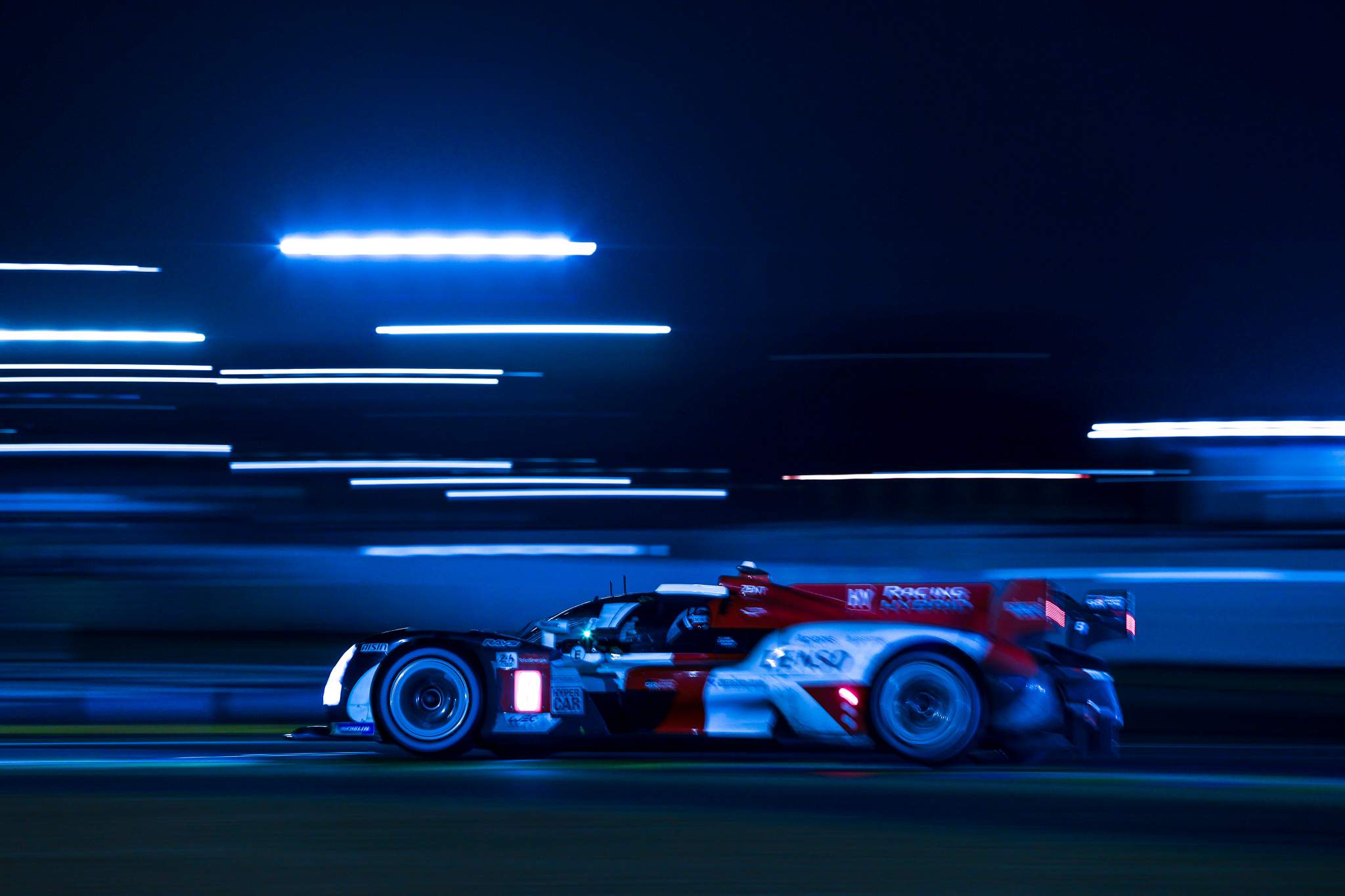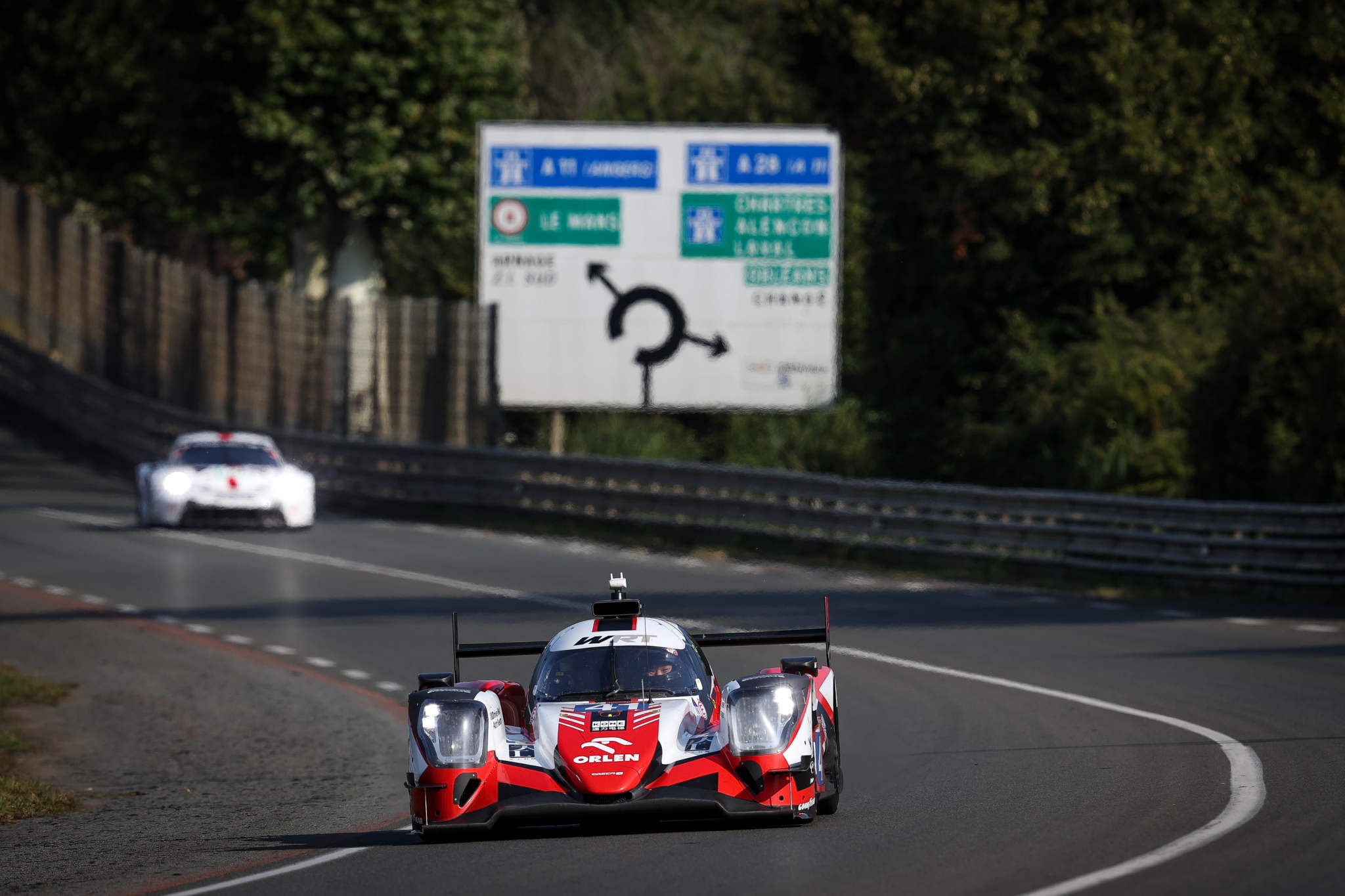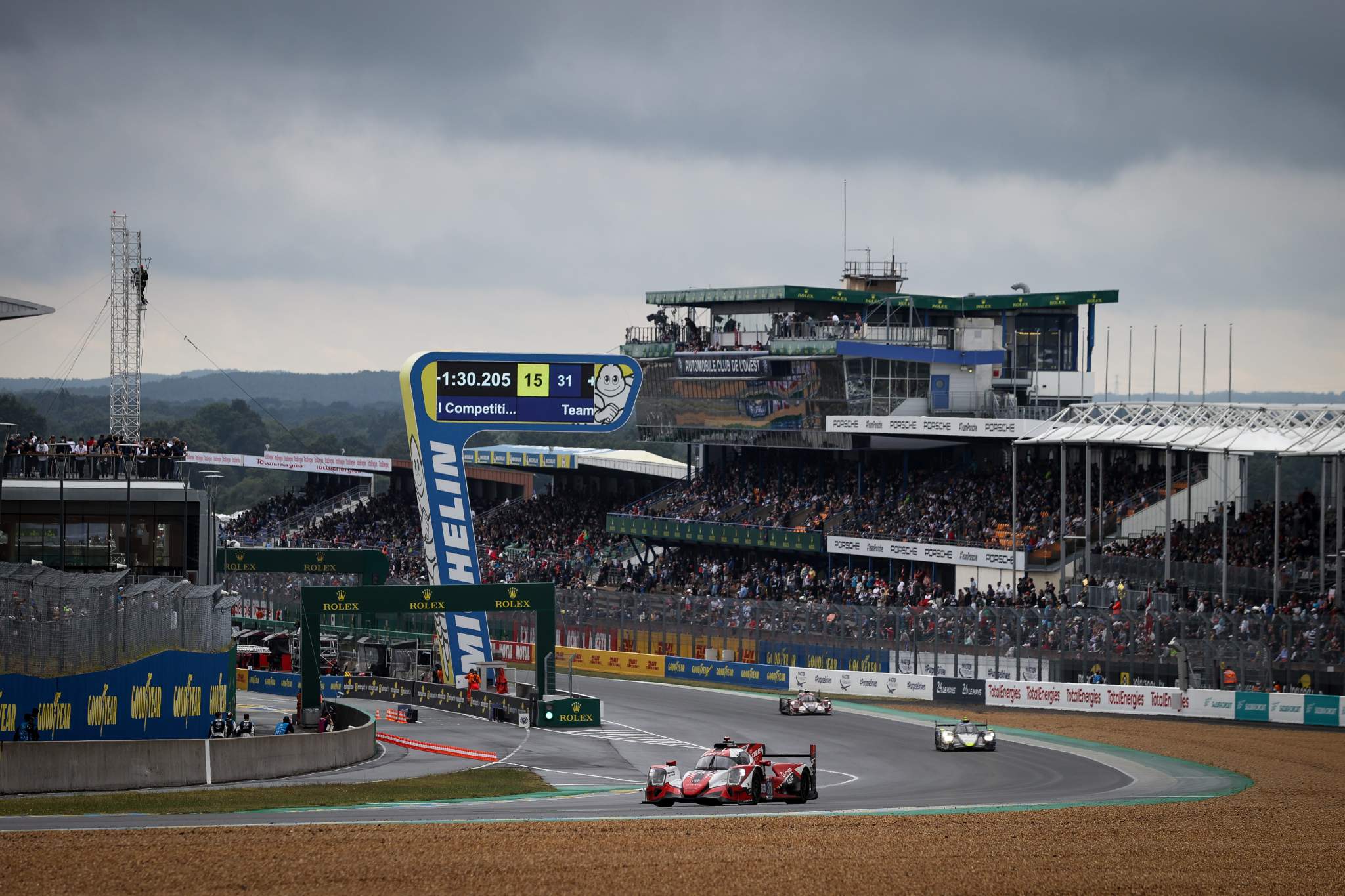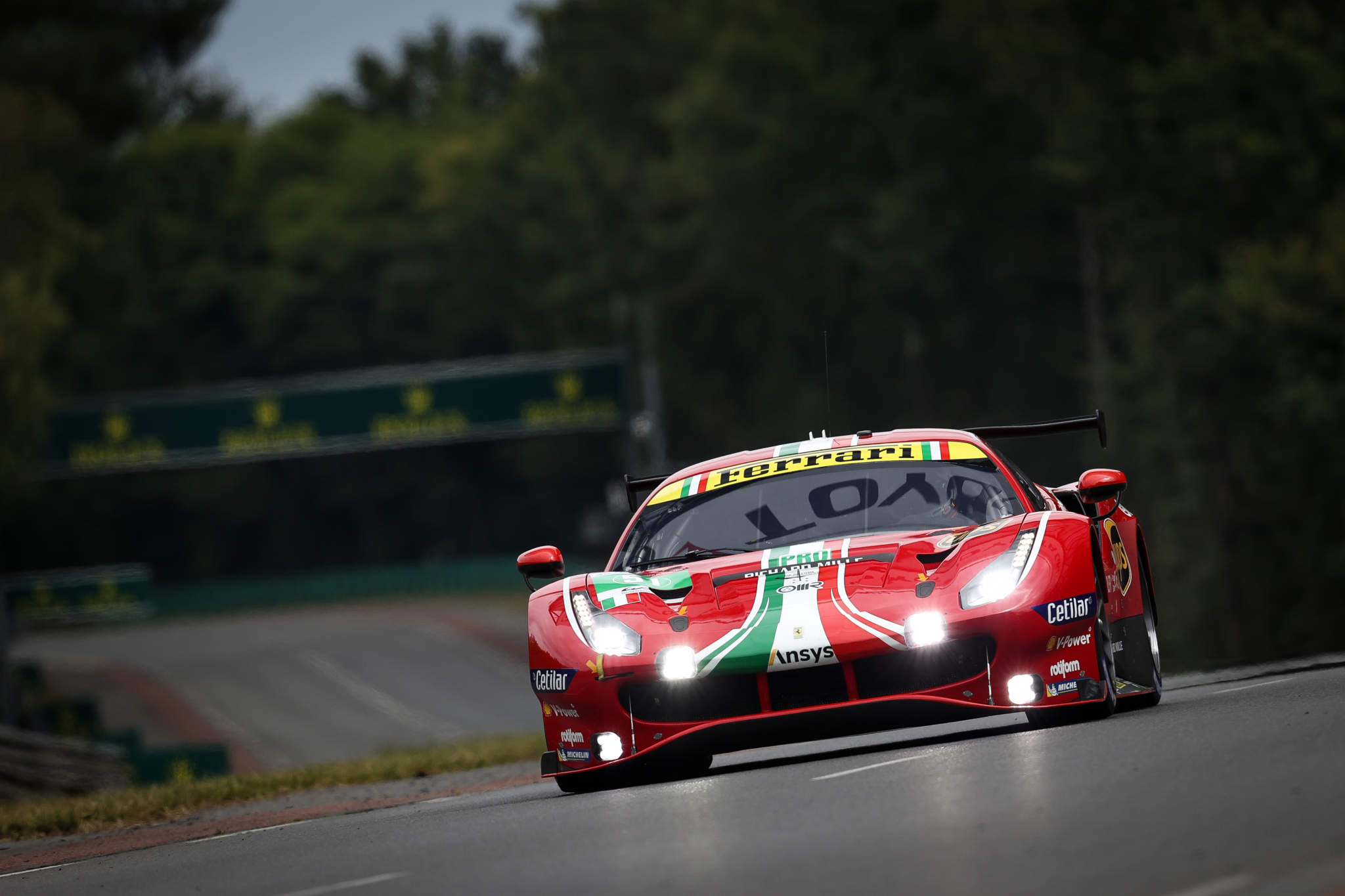Toyota’s previously luckless #7 crew of Mike Conway, Kamui Kobayashi and Jose Maria Lopez finally claimed a Le Mans 24 Hours victory as the firm took an uncontested victory for a fourth year in a row.
It wasn’t a trouble-free run for either the winning Toyota or the sister car, the #8 of Sebastien Buemi, Kazuki Nakajima and Brendon Hartley – which had won Le Mans for the past three years, with Fernando Alonso rather than Hartley in 2018/19.
The #8 (below) was punted off the road and down to the back of the field by a Glickenhaus on the first racing lap in initially wet conditions, needed damage repairs in the night and later had the worst of fuelling issues that afflicted both cars and forced ever-shorter stints between stops.

But with no factory opposition in the World Endurance Championship’s top class still, even as the Toyotas faltered they stayed clear of the opposition.
Kobayashi, Conway and Lopez won by two laps over Buemi, Nakajima and Hartley, although both cars pitted with 10 minutes to go in what appeared to be a photo opportunity for Toyota to finish both cars together. The next-best car was four laps down on the winner and two behind the #8.
The restricted Rebellion LMP1 car now running as an Alpine badged Hypercar, and the lead entry from American underdog Glickenhaus, staged a close race throughout the 24 hours, with the #36 Alpine emerging on top for third overall and the two Glickenhaus cars completing the outright top five.
The Signatech-run Alpine project is very much a toe-in-the-water bid to trigger a fully-fledged Alpine Hypercar entry. News that Alpine was carrying out a pre-race parade at Le Mans including a Formula 1 car demo with Alonso raised hopes that programme would be announced this weekend, but no news was forthcoming.
Not that Le Mans is going to be short of manufacturers in the coming years – which is just as well considering how long the race has suffered from a lack of opposition for Toyota.
Given its heritage, the challenge of the circuit and how evocative the race is even at its least competitive, Le Mans’ reputation has not been under threat as such in the four years since Porsche followed Audi out of the WEC’s top class and left Toyota standing alone.
But its chances of attracting wider interest will increase enormously over the coming years as first Peugeot (in 2022) and then Ferrari, Audi and Porsche (in 2023) take advantage of the Hypercar rules to launch new programmes – with Alpine far from the only brand rumoured to be joining them.

With that era still to come, LMP2 was the most competitive class at Le Mans this year.
Yet once Anthony Davidson had spun the Jota entry that Antonio Felix da Costa had put on class pole into the gravel, the LMP2 fight was controlled by Le Mans newcomer Team WRT (above).
The enormously successful GT squad may have been taking on Le Mans for (remarkably) the first time, but it didn’t show as it stormed towards what would’ve been an LMP2 1-2 and sixth and seventh overall.
The #41 car (above) had plenty of pedigree with Robert Kubica and Formula 2 race winner Louis Deletraz, but the third driver of the trio Yifei Ye is relatively new to sportscar racing and delivered a strong performance on his Le Mans debut.
However, on the very last lap of the 24 Hour race in what can only be described as a heartbreak, Ye ground to a snail’s pace with a mechanic issue.

The sister car (above) of Formula E ace Robin Frijns, Ferdinand Habsburg and Charles Milesi had to use an inflatable air jack to service that car but was just over half a minute off the #41 when that car stopped.
Frijns inherited the lead and had to hold off the Jota car of Tom Blomqvist who closed in from over two seconds behind but came up 0.7s short, unseen by TV cameras as they focused on the processional Toyota finish.
Blomqvist shared the runner-up entry with Stoffel Vandoorne and Sean Gelael, while the Panis Racing car of James Allen, Julien Canal and Will Stevens rounded off the class podium.

Ferrari was in commanding 1-2 form in GTE Pro – a class that has dwindled during the last two years over the coronavirus pandemic – for much of the event, until a suspension problem dropped the second AF Corse car down the order.
The #51 Ferrari of James Calado, Alessandro Pier Guidi and Come Ledogar kept the top Corvette – #63 – at arm’s length from there, and their AF team-mates Nicklas Nielsen, Francois Perrodo and Alessio Rovera claimed GTE Am honours.





